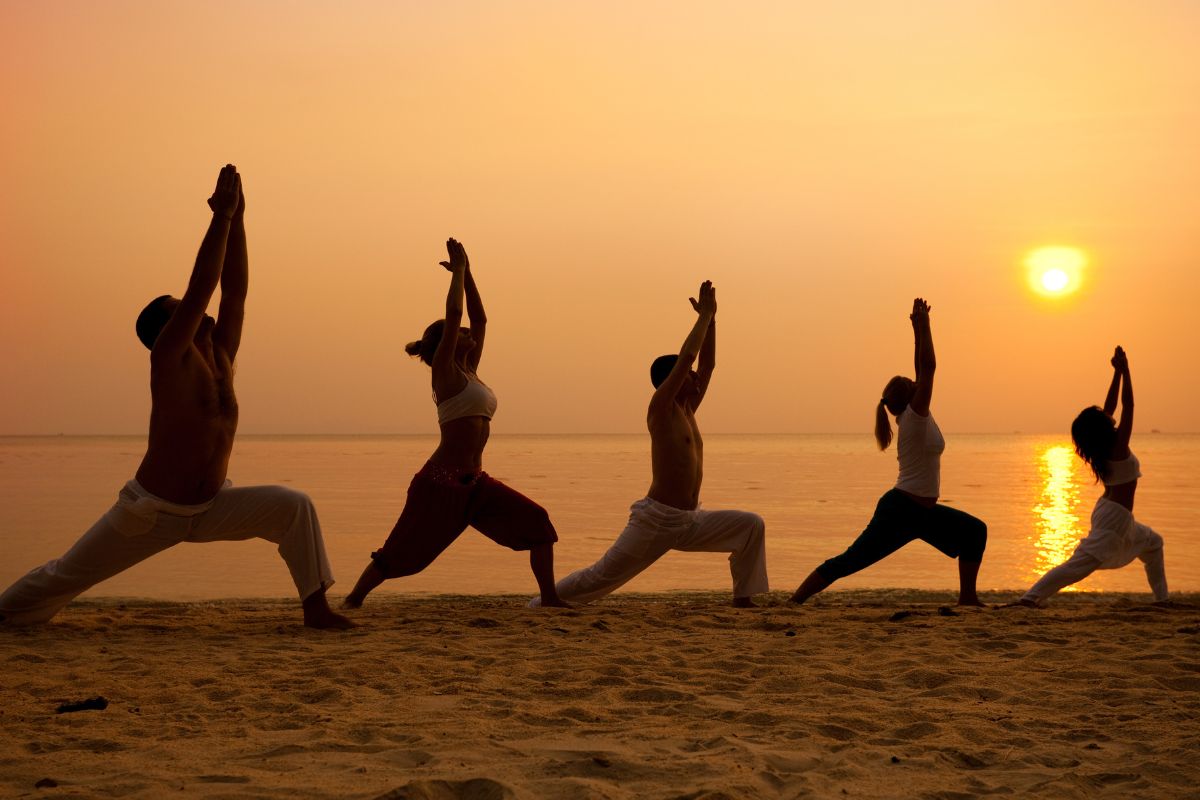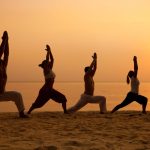Let’s be honest; most people only think about blood circulation when something feels off. Your feet start feeling colder than the fridge drawer, your legs go numb on the train, or your fingers fall asleep holding your phone in bed. That’s your body saying, “Hey, I need better blood flow.”
You could go all out with cardio, start wearing compression socks, or just… move a little smarter. This is where yoga slides in, not the Instagram kind with handstands on cliffs. We’re talking about real, doable, lazy-on-some-days yoga. The kind that wakes your body up without making you hate your life.
What Does Blood Flow Have to Do With Yoga?
You know how you feel stiff after sitting in one spot too long? That’s poor circulation’s way of tapping you on the shoulder. Blood isn’t getting around like it should, and your limbs are paying for it.
Yoga fixes that without turning you into a sweaty mess. Certain poses stretch and squeeze different parts of the body, which helps push blood out and pull fresh blood back in. It’s not magic. It’s just a smart move.
Poses That Actually Help With Circulation (And Don’t Require Acrobat Skills)
Here’s a list of real poses that people with normal bodies can do — no chanting, no weird props. Just you, a mat (or carpet), and a little willingness.
Legs Up the Wall (Viparita Karani)
What it looks like: You lie on your back and swing your legs up against the wall. That’s it. Just stay there.
Why it works: It’s like draining the tank. Gravity pulls the blood back toward your core and brain, and your tired legs finally get a break. Especially good after standing all day or long hours of sitting.
Stay for: 5–15 minutes. Set a timer. Close your eyes. Breathe.
Downward Dog (Adho Mukha Svanasana)
Yes, it’s the one pose even non-yoga people know — and for good reason.
Why it helps: It’s an all-in-one. You’re upside down enough to get blood to your brain, while your legs and arms stretch and get the circulation going. It’s energizing but not exhausting.
Tip: Bend your knees if your hamstrings are tight. Don’t aim for pretty; aim for comfort.
Seated Forward Fold (Paschimottanasana)
Translation: Sit down and reach for your feet.
Why it works: You’re giving your lower back, spine, and legs a nice stretch. That helps circulation through the backline of the body. It also forces you to slow down for a bit, which helps more than people realize.
Use a cushion under your knees if your hamstrings scream. Nobody’s watching.
Cat-Cow Stretch (Marjaryasana–Bitilasana)
This one’s underrated. It’s the yoga version of a shoulder roll.
How to do it: Get on all fours. Inhale, arch your back, and lift your head. Exhale, round your spine like an angry cat. Repeat.
Why it helps: Great for spinal fluid movement and blood flow around the neck and chest. Especially helpful if you sit hunched over a laptop all day.
Cobra Pose (Bhujangasana)
You’re basically lying on your belly and lifting your chest. Like a casual mini-backbend.
Why it helps: Opens up the chest and stretch the belly, which helps blood move better to your organs. Also, it’s weirdly satisfying.
Try it after: A long day of slouching. It reverses the laptop hunch.
Bridge Pose (Setu Bandhasana)
What it looks like: You’re lying down, knees bent, and lifting your hips up off the floor.
Why it works: It gets blood moving through your lower back and legs. Feels like a leg day cooldown without the pain.
Hold it for 30 seconds or so. Let your shoulders stay on the floor.
Reclining Twist
Why bother with this one? It wrings out the body like a sponge. Blood and oxygen flood back in once you release. Good for digestion, lower back, and overall flow.
How to do it: Lie on your back, and pull one knee across your body toward the floor. Your opposite arm stretches out to the side. Switch after a minute.
Feels amazing. Low effort, high reward.
Breathing Matters More Than You Think
You can do all the stretching in the world, but if you’re breathing like you’re stressed in traffic, it’s not going to help much. Deep breathing, the slow kind, tells your body to relax. It boosts oxygen delivery, helps your heart do its job better, and keeps things moving.
Try this:
- Inhale through your nose for 4 counts.
- Hold for 2.
- Exhale slowly for 6.
- Do it 5 times.
- You’ll feel it. Promise.
When Should You Do These?
- In the morning? Great way to wake up gently.
- During work breaks? Helps offset hours of sitting.
- Before bed? Slows things down so you can actually sleep.
You don’t need a 60-minute class. You need 10–15 minutes and a bit of quiet. Do what you can; skip what you can’t. Yoga isn’t a test.
Real Talk: Don’t Expect a Miracle After One Session
One stretch won’t solve poor circulation. But daily gentle movement adds up. You’ll notice fewer pins and needles, less heaviness in your legs, and more energy during the day. Little by little, things start working better.
And unlike pills or weird devices, there are zero side effects, unless you count sore hamstrings from getting too ambitious.
A Few Tips You Actually Need
- Don’t hold your breath. People forget, and it messes with the whole point.
- Hydrate. Blood can’t move well if you’re basically a raisin.
- Don’t push yourself into poses that feel wrong. You want flow, not injury.
- Be consistent. 10 minutes every other day beats 1 hour once a month.
Conclusion
Yoga for blood circulation doesn’t need to be dramatic or overly “zen.” It just needs to be regular. Stretch your body, breathe deeply, and flip yourself upside down now and then; that’s it. No rituals, no mats made of Himalayan sheep hair, no pressure.
Better blood flow can help with fatigue, cold limbs, brain fog, and even stress. It’s not about becoming a yogi. It’s about giving your body a fair shot at feeling good again.
If you can get on the floor and move for 10 minutes, you’re already doing enough.










